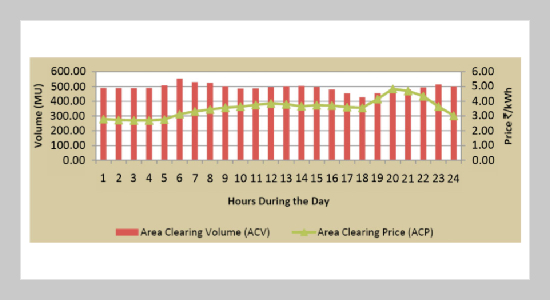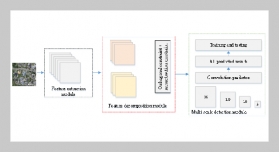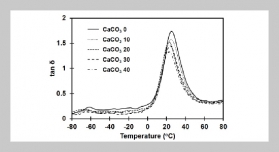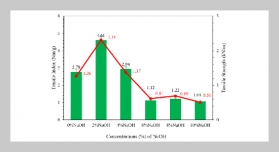REFERENCES
- [1] Sheble, G. and Fahd, G., “Unit Commitment Literature Synopsis,” IEEE Transactions on Power Systems, Vol. 9, pp. 128�135 (1994). doi: 10.1109/59.317549
- [2] Vemuri, S. and Lemonidis, L., “Fuel Constrained Unit Commitment,” IEEE Transactions on Power Systems, Vol. 7, pp. 410�415 (1992). doi: 10.1109/59.141736
- [3] Baldick, R., “The Generalized Unit Commitment Problem,” IEEE Transactions on Power Systems, Vol. 10, pp. 465�475 (1995). doi: 10.1109/59.373972
- [4] Bard, J. F., “Short-Term Scheduling of Thermal Generators Using Lagrangian Relaxation,” International Journal of Optimization Research, Vol. 36, No. 5, pp. 756�766 (1988). doi: 10.1287/opre.36.5.756
- [5] Lakshmi, K. and Vasantharathna, S., “A Profit Based Unit Commitment Problem in Deregulated Power Markets,” Proc. of IEEE Third International Conference on Power Systems, IIT Kharagpur, India, Dec. 27�29, pp. 1�6 (2009). doi: 10.1109/ICPWS.2009. 5442772
- [6] Kazarlis, S. A., Bakirtzis, A. G. and Petridis, V., “A Genetic Algorithm Solution to the Unit Commitment Problem,” IEEE Trans. on Power Systems, Vol. 11, pp. 83�92 (1996). doi: 10.1109/59.485989
- [7] Swarup, K. S. and Yamashiro, S., “Unit Commitment Solution Methodology Using Genetic Algorithm,” IEEE Transactions on Power Systems, Vol. 17, pp. 87�89 (2002). doi: 10.1109/59.982197
- [8] Yang, H. T., Yang, P. C. and Huang, C. L., “A Parallel Genetic Algorithm Approach for Solving the Unit Commitment Problem,” IEEE Transactions on Power Systems, Vol. 12, pp. 661�669 (1997). doi: 10.1109/ 59.589638
- [9] Juste, K. A., Kita, H., Tanaka, E. and Hasegawa, J., “An Evolutionary Programming Solution to the Unit Commitment Problem,” IEEE Transactions on Power Systems, Vol. 14, pp. 1452�1459 (1999). doi: 10.1109/ 59.801925
- [10] Cheng, C. P., Liu, C. W. and Liu, C. C., “Unit Commitment by Lagrangian Relaxation and Genetic Algorithms,” IEEE Trans. on Power Systems, Vol. 15, pp. 707�714 (2000). doi: 10.1109/59.867163
- [11] Wang, X., Gao, X. Z. and Ovaska, S. J., “Artificial Immune Optimization Methods and Applications � A Survey,” Proc. of 2004 IEEE International Conference on Systems, Man and Cybernetics, Oct. 5�8, pp. 3415�3420 (2004). doi: 10.1109/ICSMC.2004.1400870
- [12] Panigraphi, B. K., Yadav, S. R., Agarwal, S. and Tiwari, M. K., “A Clonal Algorithm to Solve Economic Load Dispatch,” Int. Journal of Electric Power Systems Research, Vol. 22, pp. 1381�1389 (2007). doi: 10.1016/j.epsr.2006.10.007
- [13] Dasguptha, D. and Okine, N. A., “Immunity-Based Systems: A Survey,” IEEE Transactions on Power Systems, Vol. 1, pp. 369�374 (1997). doi: 10.1109/ ICSMC.1997.625778
- [14] Rahman, T. K. A., Yasin, Z. M. and Abdullah, W. N. W., “Artificial Immune Based for Solving Economic Dispatch in Power Systems,” Proc. of 2004 National Power and Energy Conference, Malaysia, Nov. 23�25, pp. 31�35 (2004). doi: 10.1109/PECON.2004.1461611
- [15] Lakshmi, K., Vasantharathna, S. and Muniraj, C., “Clonal Selection Based Artificial Immune System to Solve the Unit Commitment Problem in Restructured Electricity Sectors,” Proc. of 2010 IEEE Int. Conference on Power and Energy, Kuala Lumpur, Malaysia, Nov. 29�Dec. 1, pp. 259�263 (2010). doi: 10.1109/ PECON.2010.5697587
- [16] Castro, L. N. and Timmis, J., Artificial Immune Systems: A New Computational Intelligence Approach, 1st ed., Springer, UK, pp. 231�259 (2002). doi:10.1016/ S0893-6080(03)00058-3
- [17] Wood, A. and Wollenberg, B., Power Generation, Operation, and Control, 2nd ed., John Wiley & Sons, New York, pp. 131�166 (1996). doi: 10.1016/0140- 6701(96)88715-7
- [18] Back, T., Evolutionary Algorithms in Theory and Practice, 1st ed., Oxford University Press, New York, pp. 381�467 (1996).
- [19] Information on http://www.cs.ukc.ac.uk/aisbook.









